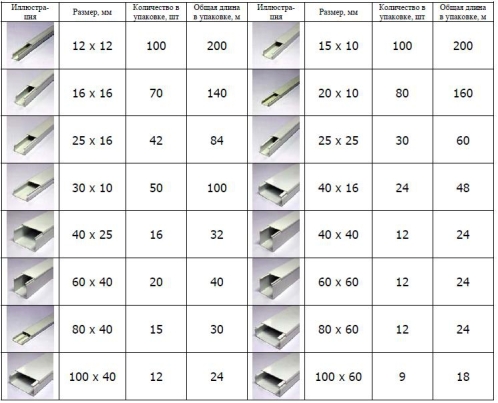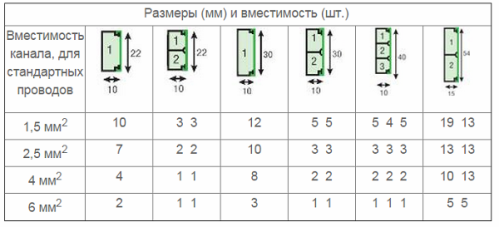Categories: Electric installation work
Number of views: 27260
Comments on the article: 0
How to choose a cable channel for wiring
In any civilized house, office, or industrial premises there is a standard wiring. Traditionally, wires still under construction are laid in a furrow in the wall or in the ceiling, which is then sealed. But there is another way to hide the wires, doing everything without noise and dust.
Let's say you started a repair or decided to lay a communication or electric wire from one room to another over a wall or ceiling, so that no one would stumble over it, and in general so that the wire would not catch your eye. Here you will be helped modern cable channels.
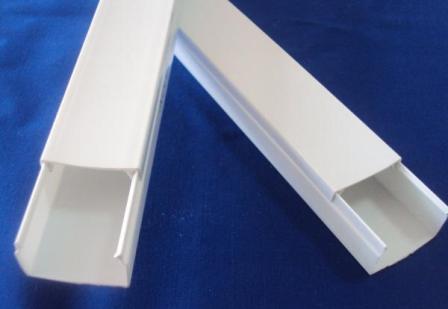
Cable channels will allow aesthetically concealing, and at the same time, it is quite reliable to protect your wires from dirt and moisture. If necessary, the wires can be easily removed, supplemented with another wire or completely replaced the wiring. By the way, installation of cable channels is quite simple. However, first things first.
As a rule, any modern building is replete with wires and cables. If the cables remained lying on the floor or even along the wall, they would still interfere with the movement of people, at least they would spoil the interior, but they would pose a danger of electric shock (especially if the network cable is electric).

Cable channels easily solve these problems. Do not confuse them with metal boxes, which are not flexible enough and not quite aesthetic.
Plastic cable ducts are both aesthetic and flexible, they will give safety and will not spoil the interior of the room. PVC white or wood, for interior decoration on the floor in the form of a plinth or in the form of just a narrow box - the choice is yours.
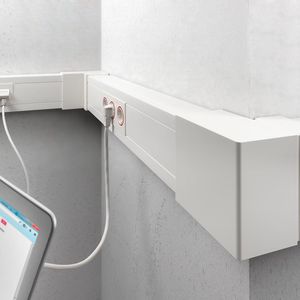
They can be installed in an office, in an apartment or in a house, in a public building or in a workshop, you just need to choose the degree of protection of the shell, and pay attention to the presence or absence of perforation, as well as the quality of the cover.
With all its advantages, PVC channels are not very expensive, not least for this reason they are very popular when laying cables indoors.
The cable channel itself is most often a collapsible tube of rectangular cross section made of PVC. The base and cover are the main parts of the cable channel. The lid simply snaps onto the box into which the wires fit.
The wires laid in the channel can be electric power wires, telephone cables, information communication cables, etc. - any wires traditionally used indoors.
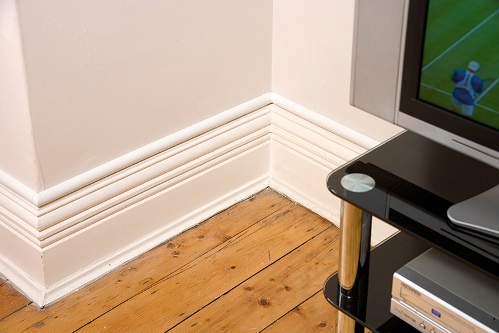
What are the cable channels
To date, the best manufacturers of electrical products (for example, Legrand, IEK or DKS) have in their assortment the following types of plastic boxes for wiring:
-
Minichannels, mini cable channels. Mainly used for laying television, telephone and computer wires. Due to its compact size they practically do not violate the interior of the room
-
Floor (have an oval box). Very comfortable, as due to their oval shape they will not interfere with movement;
-
Trunk;
-
Baseboards. Most often used in houses and apartments, as completely hide the cable in a special channel of the electrical skirting board;
-
Halogen free - the box material does not contain halogens: bromine, fluorine, iodine, chlorine, astatine. Such a product is environmentally friendly. Especially relevant is their use in enclosed spaces;
-
Parapet. The most popular type of boxes, which are most often used in homes, offices and administrative buildings;
-
Perforated. Due to their design, such boxes have a lower weight, and therefore cost. An advantage of the products can also be considered simpler cable channel mounting;
-
Flexible. Due to their perforated shape, they can be used for fastening cables on uneven surfaces. They can be round or rectangular in shape;
-
Corner. This type of cable ducts is recommended to be used for fixing wiring under the ceiling;
-
Transparent. They have proven themselves excellently in creating LED backlighting. Due to its absolute transparency and compact size, using such cable channels, it is possible to fix the LED strip on the ceiling, walls or even the bottom of the car without problems.
-
Wire. The cheapest kind of cable trays and at the same time the most convenient in terms of cleaning. Dust practically does not settle on steel wire boxes, which makes them very practical if you need to conduct wiring in a warehouse or technical room. Another plus of wire trays - they are well ventilated, so that the cable line warms up less.
-
Staircase. Used for laying heavy cables, as have a reinforced structure.
-
Special boxes for air conditioners.
These are all the most popular types of cable channels that can be used in homes, administrative and industrial premises.

Dimensions
They sell PVC products in standard cuts, each two meters long. But the dimensions of the section can be different: from 12 to 12 to 100 to 60 and all kinds of intermediate dimensions (80 to 40, 50 to 16, 70 to 20, 40 to 40 and others). The shape is also determined by the type of product, for example, the corner channels have a triangular section. The size is selected depending on the thickness of the wires.
With cable channel dimensions, everything is much simpler. You can see the assortment of sections in the table below:
It should be noted that some manufacturers may also have other sizes of cable channels, for example, 80 * 45 mm. The most popular are 12 * 12 (for laying communication cables), 40 * 40 and 100 * 60 mm. In corner trays, the section 40 * 40 mm is considered the most practical.
To choose the right plastic product, you need to decide what size the box should be. It is necessary that all the wires fit freely in its capacity and a small margin remains, which can then come in handy.
It is worth considering that the main channel, which stretches upward along the ceiling, is better to choose a larger size, and the box for vertical taps to the switches and sockets is smaller.
Next, you need to calculate how much channel you need to install. It is better to consider the length with a margin of 15-20 percent. Since during operation some part of the box can be spoiled, and the channel may not come out to buy the same cable. The cable channel can be chosen in different colors, but you need to remember that white products are sold in a wider range.
The following table will help calculate the minimum size of the channel cable knowing the number and cross-section of wires:
Selection of accessories for cable channels
Most manufacturers of plastic boxes produce various accessories for them, such as:
-
joints
-
stubs;
-
tees;
-
corner transitions;
-
external and internal corners.
Even saving on the price of the box itself, it is better not to waste time on additional elements and do not buy a cable channel without accessories. With it, installation will become much easier, and the finished product will look much nicer.
Color schemes
The most popular material for the channel body is PVC, and it is not by chance that this material is chosen for it. Firstly, it is not expensive, secondly it is durable, thirdly it is a dielectric, and finally it is nothing for rodents. During installation, the channel is conveniently cut with a cutter to the required length and bends well if necessary. The size is selected for any volume of wires, and the color - for the interior.
Today you can order any color of boxes that is suitable for the interior of the rooms. For offices, white color is suitable, for an apartment or for a wooden country house - it is also possible under a tree.You can count over a dozen of these “wood-like” color schemes, starting from standard ones (oak, pine, beech) and ending with, such as red cherry, walnut or northern oak.

Calculate the volume with a margin so that the wires are “relatively spacious", select a color, evaluate the length of standard pieces. The usual size of a piece of profile is 2 meters. Provide a margin in volume, maybe in the future you will need to add wires - let there be more space.
Accessories such as dock adapters, tees and plugs should be in your plan before purchasing materials. The very last step when buying is to check how conveniently and firmly the channel snaps into place.
Installation of cable channels
Installation of the channel will not bring much trouble. If your floors, walls and ceilings are even, then there is nothing easier than gluing a channel over the cladding, having previously cut a piece of the desired length with a knife or grinder. You can glue on "liquid nails" or other good glue.
As an option for fastening for wood - on screws. For concrete, dowels are also possible. When the base of the channel is mounted (if glue was used, then when the glue is completely dry), it remains to lay the wires and close the channel with a lid. Make sure the joints are not very noticeable.
Read more about the installation of cable channels here:The technology of mounting the cable channel from PVC (how to optimize the work)
See also at bgv.electricianexp.com
:

